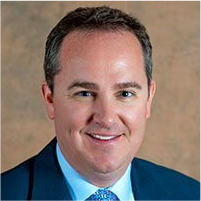
A head-on collision is a rare but highly dangerous type of car accident. The extreme force of the two motor vehicles crashing into the front of each other means that the injuries are usually devastating and fatal. That is why determining fault in a head-on collision is very important.
If you or someone that you love were hurt in a head-on crash, then you could be entitled to receive compensation for injuries and other damages that you sustained. A car accident attorney will provide you with the support and guidance that you need following a head-on collision.
At The Law Place, we have over seventy-five years of collective experience when it comes to helping clients who have been injured in head-on collisions throughout the State of Florida. Our law firm understands the serious nature of head-on collisions, and we want to help you and your family during this difficult time.
Contact The Law Place on (941) 444-4444 to schedule a free consultation today.
What Is a Head-on Collision?
A head-on collision, also known as a frontal crash, happens when two motor vehicles that are driving in the opposite direction crash into each other. If there is damage to the front side of both motor vehicles, then they were most likely involved in a head-on collision.
A head-on collision can happen with a car, motorcycle, or truck. An accident involving a frontal crash will usually occur when a driver crosses the middle of the road and moves into oncoming traffic. It can also happen when a driver is traveling the wrong way in traffic.
How Is Fault Determined in a Head-on Collision?
The law on negligence is used to determine fault in a head-on collision or any other type of car accident. Negligence is known as a driver’s failure to operate their motor vehicle with reasonable care in order to avoid causing injury or damage to someone else or their property. Reasonable care refers to a driver being able to pay attention to the road, road signs, not moving into the oncoming traffic lane, and not traveling the wrong way on the road. When a driver fails to drive with reasonable care, then it is usually easy to determine who is at fault for a car accident.
Causes of Head-on Collisions
There are a number of causes behind a head-on collision. Most of the causes are the result of a driver not acting with reasonable care when they are on the road. The most common causes of head-on collisions include:
- Speeding.
- Traveling the wrong way on the road.
- Turning the wrong way down a one-way street.
- Driving under the influence of alcohol or drugs.
- Driving distracted by using the mobile phone, engaging in conversation with another passenger, using a navigational system, eating, drinking, or trying to find something in a bag.
- Falling asleep at the wheel and moving into oncoming traffic.
- Passing a motor vehicle on a two-lane road by traveling in the opposite lane of traffic.
- Failing to see, read or follow road signs that describe the flow of traffic.
- Crossing over the centerline.
- Driving in the middle of dangerous weather conditions.
Who Is at Fault for Causing a Head-on Collision?
The answer for who is at fault in a head-on collision is usually the driver who was traveling in the wrong direction. For example, a drunk driver starts to weave from side to side. They swerve so far into the other side of the road that they enter the lane of oncoming traffic. Another example includes a driver who is new to an area and does not realize that a street is only one way. The driver moves down a one-way street in the wrong direction and collides with oncoming traffic.
However, this is not always necessarily the case. A collision between motor vehicles traveling in the same direction can send one or more of them into oncoming traffic at times. In this case, the fault for a head-on collision would be assigned to the driver who pushed the other into oncoming traffic.
There are other times when a head-on collision is not the fault of a driver at all. A few examples include a driver having a sudden medical emergency, a car blowing a tire, a motor vehicle having a steering defect, a roadway that is not properly maintained, or a road sign that directs traffic has been removed.
How Do You Prove Fault in a Head-on Collision?
More often than not, a driver will admit that they were at fault for causing a frontal crash. However, there are also times where the drivers involved in a car accident will have different versions of what happened, or they might lie about what happened in an attempt to shift the blame. In other cases, the impact of the car accident can be very severe that none of the drivers involved are able to remember exactly what happened. In every single one of these cases, the physical evidence will help to prove who is at fault for causing a head-on crash. However, it is not always easy to figure it out.
It is imperative that you speak to a personal injury lawyer as soon as possible. They will be able to advise you on the right steps to take following a head-on crash, such as:
- Remain at the scene – You should always remain at the scene of a car accident. Otherwise, it could be seen as a hit and run.
- Call an ambulance – If you or anyone else suffered an injury, then you should call for an ambulance immediately.
- Call the police – You have a responsibility to call the police to the location of a car accident as soon as possible. Once they arrive, a report will be filed of the accident.
- Collect evidence – If you are physically capable, then you should try to collect as much evidence from the scene of the car accident as you can. Evidence includes taking pictures of the location, the damage to the motor vehicles, injuries, skid marks, and more. You should also try to get the names, addresses, and phones numbers of people who witnessed the accident take place.
- Hire a personal injury attorney – After a car accident, you should find a personal injury attorney to handle your case as soon as possible. Call The Law Place to set up a free consultation. Our phone lines are open twenty-four hours a day, seven days a week.
Injuries Sustained in Head-on Collisions
The force created in a head-on crash will usually cause severe injuries and possibly even result in death. The most common injuries that are sustained in head-on collisions include:
- Whiplash.
- Neck pain and back pain.
- Chest and rib fractures.
- Foot, ankle, and lower extremity injuries and fractures.
- Abdominal injuries.
- Pelvic fractures.
- Spinal cord injuries.
- Paralysis.
- Head trauma, concussions, and traumatic brain injuries.
Duty of Care in Car Accidents
There are four elements that are important to prove when it comes to establishing fault in a car accident case:
- Duty of care – The driver had a legal duty to travel with reasonable care in order to keep themself and everyone else safe.
- Breach of duty – The driver breached their duty of care by traveling in a negligent or reckless manner.
- Causation – The breach of duty caused a car accident to happen.
- Damages – The car accident resulted in a number of losses and expenses.
A personal injury lawyer from The Law Place will be able to prove all of the four elements on your behalf in order to establish that the other driver was at fault for the car accident. Call our office to set up a free consultation now.
Types of Evidence to Determine Fault
The most common types of evidence that can be used to determine fault include:
- Witness statements.
- Statements from professionals.
- Police reports.
- Damage reports.
- Photo or video evidence from the location of the car accident.
In most cases, it is possible that a report from the police will indicate who is at fault. However, it is not always a deciding factor.
Compensation After a Head-on Collision
The State of Florida follows no-fault insurance laws, which means that every driver is required to carry a minimum of $10,000 in personal injury protection (PIP) coverage. However, sometimes injuries and damages might exceed the limits of the personal injury protection (PIP) coverage, and you will have to file a claim against the at-fault driver’s insurance. A car accident lawyer from The Law Place will help you to build a personal injury claim that will cover your:
- Medical bills (past, present, and future).
- Lost wages and a reduced earning capacity.
- Property damage.
- Pain and suffering.
- Wrongful death.
Call The Law Place to set up a free consultation now. A car accident lawyer will be waiting to receive your call.
No-fault insurance laws are written in Florida Statute 627.7407.
Statute of Limitations in the State of Florida
The statute of limitations requires you to file a personal injury claim within four years from the date of your car accident in the State of Florida. For a case involving the death of someone you love, the statute of limitations requires you to file a wrongful death claim within two years of your death.
The statute of limitations is written in Florida Statute 95.11.
Contact The Law Place Today!
If you or someone you know were involved in a head-on collision, then we highly recommend that you seek legal counsel as soon as possible. A car accident lawyer will help you to secure the full amount of compensation for the injuries and damages that you suffered.
At The Law Place, we have over seventy-five years of combined experience and knowledge in managing all types of personal injury cases for clients who live all over the State of Florida. Our team of car accident lawyers will guide you through the legal system and offer you the support that you need following a head-on crash.
If you have any questions, feel free to pick up your phone and call our office now. Phone lines are open twenty-four hours a day, seven days a week so that you can receive legal advice when you need it the most.
Contact The Law Place on (941) 444-4444 to schedule a free consultation today.
